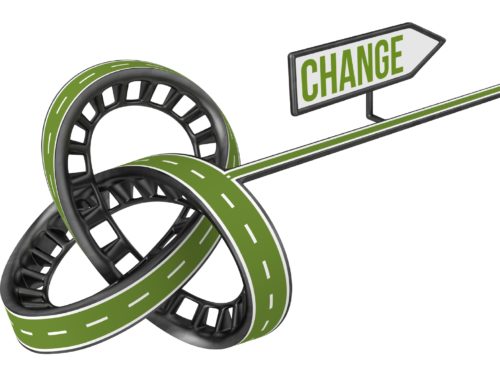Creating a collaborative, customer-focused team is simple – at least it’s supposed to be. Theoretically, all you need is establish a vision; goals and performance standards based on your agreements; resource allocation; training; and clear consequences.
Unfortunately, simple isn’t always easy. If theory worked without a glitch, you wouldn’t be feeling the pain of missed project deadlines and key stakeholders complaining that your team lacks the agility they need to meet the challenges of digital transformation and innovation.
The good news
All the work you have done up to this point creates a strong foundation for a customer-focused, results-driven operation.
The current generation of collaboration tools provides easy-to-use platforms for connecting teams with each other and customers. They will only improve with time. Likewise, the Millennial and Gen Z employees you are adding to your workforce value collaboration, and they will be loyal to the organizations that get it right.
And the bad news
Past success only proves that you could meet yesterday’s demands and expectations. Your external customers have higher expectations for a compelling experience than ever. So do your best employees, and like your customers, they have a choice about where to give their time, attention and resources.
As good as you are today, the message is clear that your team will need to be more collaborative and customer focused in the future.
- 87 percentof organizations agree traditional experiences no longer satisfy customers. (Source: Accenture)
- 86 percent of employees and executives cite lack of collaboration or ineffective communication for workplace failures (Source: Salesforce)
- 97 percent of employees and executives believe lack of alignment within a team impacts the outcome of a task or project (Source: Fierce, Inc.)
- External customer support first contact resolution (FCR) rates are reported to be 1.6-times higher than for IT support and external customer support customer satisfaction rates are 1.4-times higher than for IT support (Source: ITSM Tools unverifiable)
The next generation of customer-focused collaboration requires leaders to think differently about how they operate. Here are three ideas you can implement now.
Forced collisions to enhance the silos
Leaders have been talking about breaking down organizational silos since the first time someone muttered, “I can’t help you. We have different priorities.”
What if we have been thinking about organizational silos—and their usefulness—all wrong?
The City of Carrollton, Texas operates with fewer positions today than it had in 1995 while seeing its population increase by more than 25 percent and its citizen satisfaction and service levels remain high. The “secret sauce” is a collaborative, customer-focused culture that relentlessly pursues being better, faster and friendlier.
I’ve worked with Erin Rinehart, the current City Manager and her predecessor for over 15 years as they have created a nimble organization that quickly adapts, anticipates and pursues new ideas.
Using a municipal government for this example is not an accident. Though we think of it as a single organization, it is, in fact, multiple businesses existing under a shared umbrella. The Fire and EMS operation, for example, is totally distinct from the Police Department, Public Works, Parks and Recreation, or the Library system.
As businesses face a widening big data resource gap, they are looking within to identify the right resources to meet their needs.
Each unit does its unique job in its silo most of the time. You actually want that to happen. The part-time Rec Center attendant and the Librarian are not qualified to be members of the S.W.A.T. team. Performance excellence in highly specialized functions happens when people do what they are specifically trained to do.
It is the same for your team. It is possible that someone in App Development has network experience that enables them to contribute in an emergency. The preference, however, is to rely on the person who does that job every day.
The exceptions—and when the Carrollton staff is at their collaborative, customer-focused best—are when circumstances require everyone to work across functional groups in service to citizens.
Rinehart doesn’t want departments working against or sabotaging each other. She also expects them to cooperate and respond when asked for assistance. She also knows that true collaboration where groups actively seek and provide help to jointly solve a problem doesn’t necessarily happen every day.
The challenge is to foster intentional connections so that individuals know who to call and have trust built on past experience. She calls it creating forced collisions. Its purpose is to enhance relationships outside the silos, not abolish them.
One example is the Carrollton Leadership Institute. Participation in this seven-month program is based on an application and interview process. Group size is limited, and participants work on a project with organization-wide impact as part of the experience. The mix of members and the need to solve a problem with multiple stakeholders requires the group to learn how and when to collaborate.
Action item: What are the opportunities to create forced collisions in your team so that the effectiveness of your silos is enhanced?
Structure for collaborative, customer-focused empowerment
Globant, a digitally native technology services company based in Argentina, has turned the traditional top-down organizational structure on its head. I spoke with Martín Migoya, CEO and one of the company’s founders, about their Agile Pod concept. Globant isn’t a client, but they are actively involved in transforming how their company and teams work together.
Migoya described a Pod as “a team with diverse capabilities that work in collaboration to achieve the needs of the client.” Pods are self-organized and autonomous. They are charged with meeting the strategic, creative and production goals necessary to make the customer happy and successful.
The idea of self-managing teams isn’t new. It was first introduced in the 1960s. Companies have tried it with varying degrees of success. Some, such as W.L. Gore, Semco and Worthington Industries, have experienced amazing results. Others have struggled or abandoned the concept.
What makes Globant unique is their deployment on a global scale using technology to manage and monitor each Pod’s progress and accomplishments.
Migoya told me, “We want to place autonomy closest to the customer. That means replacing the traditional command and control with an approach that relies on autonomy, mastery and purpose.”
That sounds great, and organization geeks like me love it. But I know that there are questions about how to make this work. When I pressed Martín for the “rules of the road,” he said that, “if the rules of engagement are complex, people will make things complex. We want bright people to work together to do bright things because they want to achieve a purpose.”
Self-managing teams need structure, and Globant’s Agile Pods have boundaries. Teams have autonomy in how they accomplish the work, but there are clear objectives, roles and responsibilities. In addition, each Pod has its own Constitution that lays out its guidelines. In addition, there is a robust, cloud-based technology platform to manage and monitor performance. Having autonomy doesn’t alter a Pod’s responsibility to deliver for the client and the company.
Migoya is very clear, however, that leadership mindset precedes an empowerment structure. Leaders support the teams who solve problems for customers. It comes down to a handful of principles that make their Agile Pods work.
- You can’t control everything at the edges of your company. To succeed at those edges, you have to give people control. You don’t really know people and their capabilities until that happens.
- People can be trusted and valued to do great work. Leaders serve the team to enable and empower that to occur on a regular basis.
- You can’t make success a mystery. The largest failure at Globant is a violation of the culture and how we work together. Everyone has to know how to succeed.
Action Item: Are your teams ready to be autonomous and truly empowered? If this idea is intriguing, start with a pilot to understand the advantages and pitfalls of operating customer-focused teams at scale.
Invest in technology solutions that support safer collaboration
Lenovo isn’t a client of mine, but there is a good chance that your organization is a client of theirs. The technology firm supplies much of the hardware found at the desks and in the hands of workers around the world.
I spoke with David Rabin, Vice President of Global Commercial Business, about technology’s role in creating and supporting collaborative, customer-focused teams. His comment highlights the importance of proactively investing in new tools:
“The employee experience is not just the job of HR. Their experience is also driven by technology. If the technology doesn’t work, the experience is a bad one. Companies that don’t invest in technology that enables collaboration are turning employees into a bad investment.”
Before you discount Rabin’s comments as those of a marketing guy with products to sell, consider this. A study by Switzerland-based IWG states that 70 percent of professionals work remotely at least once per week, and 53 percent do so for at least half of the week.
Work connections are essential to satisfied teams according to the Slack Future of Work Study released in October 2018. Eighty-five percent of workers want to feel a stronger connection to their remote colleagues. Likewise, only 31 percent of respondents were extremely satisfied with their current workplace communication tools.
Additionally, service and traditionally blue-collar professions ranging from the flight attendant who checks your connections from their handheld device to the washing machine repair person who arrives at your home are all connected by technology.
Rabin is correct when he says, “Wherever you are is now your office,” and that reality might frighten you. The old days of IT controlling what can and can’t be done on their network are gone. Your employees want to choose the products they use. The job of the IT department is to enable a stellar user experience while maintaining security.
Action Item: Rabin believes that technology leaders must be forward thinking in their plans for a workplace that is even more distributed than today. Now is the time to think about what the “workplace” will look like from a space and place perspective? What equipment will you need? How will you keep your data secure? Will you even need places like large meeting rooms, or can those spaces be repurposed for better uses?
Collaborative, customer-focused teams are an essential part of proving your value to your customers and your employees. It is time that empowering and supporting that work takes a prominent place on your priority list. It is simple, but it isn’t easy.
This article is published as part of the IDG Contributor Network. Want to Join?
Randy Pennington is an award-winning author, speaker and leading authority on helping organizations achieve positive results in a world of accelerating change. To bring Randy to your organization or event, visit www.penningtongroup.com , email info@penningtongroup.com, or call 972.980.9857.





